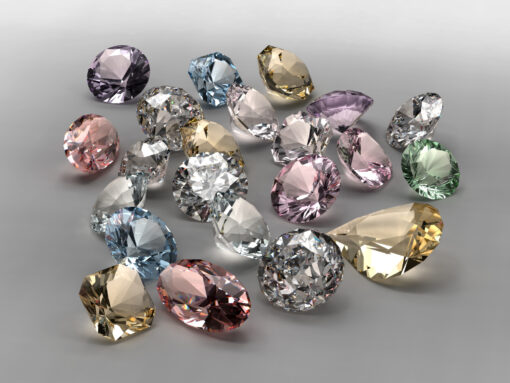
Make sure you’re making a wise investment before you follow the trend by taking a moment to learn more about colored diamonds. If you want to sell your colored diamonds, get in touch with GNJ Pawn Big or stop by for a quote.
What Is Unique About a Colored Diamond?
There are innumerable shades of each color, ranging from faint tints to intensely saturated colors, and over 300 different colors of diamonds have been identified with official designations. Because they blend a diamond’s brilliance and hardness with a gem’s vibrant color, colored diamonds are in high demand.
How Are Colored Diamonds Created?
Pure carbon is used to create white diamonds. Diamonds can develop other colors when they are exposed to pressure, contaminants, or natural radiation during their development. When a diamond contains nitrogen, blue hues result from boron, and gray hues result from hydrogen.
Green diamonds are the result of millions of years of exposure to gamma radiation from the earth’s atmosphere, whereas pink, red, purple, and some shades of brown are the result of crystal lattice distortion inside the diamond.
What Are Augmented or Synthetic Stones?
In a lab, colored diamonds can be produced by using heat, radiation, and pressure. For this procedure, low-grade natural diamonds are frequently used, but lab-created synthetic diamonds are also an option. Any diamond that is said to as improved or artificial has undergone human intervention and, as a result, lacks the distinctiveness and scarcity that account for a significant percentage of the appeal of a natural diamond
How Much Are Colored Diamonds Worth?
Depending on the degree of the hue, the size, the purity, and the level of demand for a particular color, naturally colored diamonds can be highly costly. The value of your colored diamond jewelry in terms of resale value mainly depends on whether you have a certification card or not.
Without a certification card, no one will handle your stone because it can be challenging for the typical jeweler to tell a stone that has been artificially enhanced from one that is naturally colored. Of course, you can still sell the jewelry as a collectible item or get paid cash for the amount of gold it contains.


